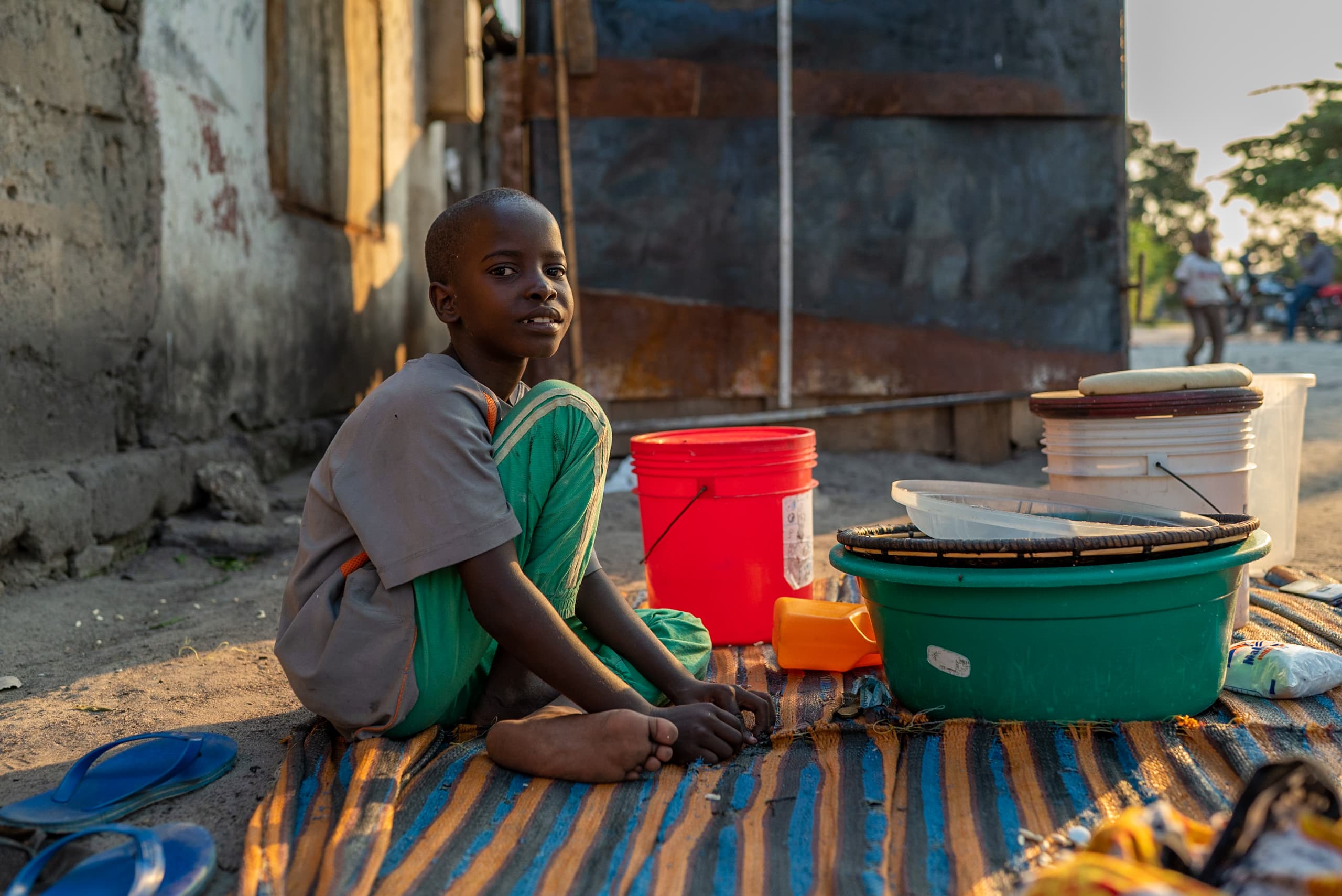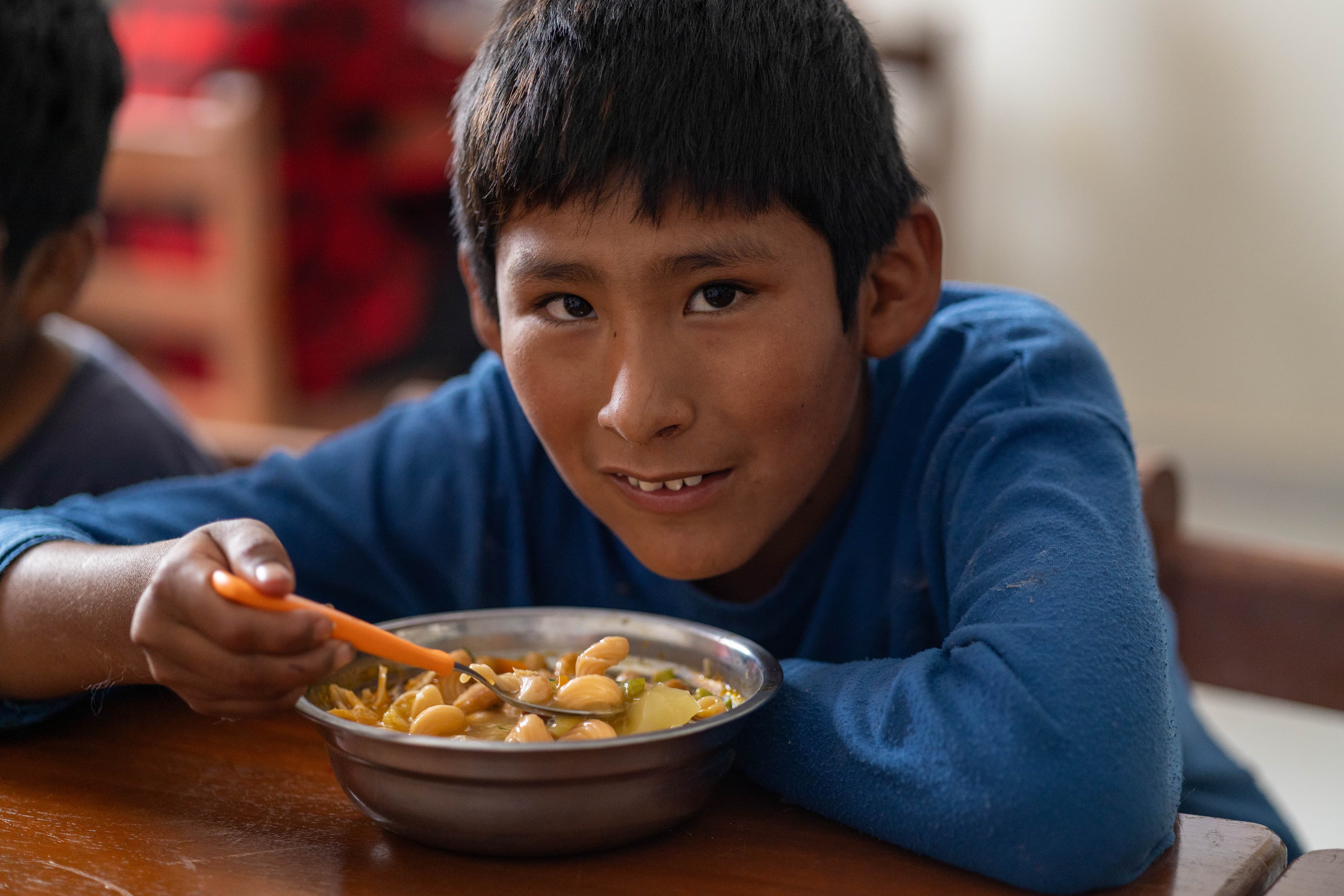What Is World Food Day?
World Food Day happens every October 16 to commemorate the start of the Food and Agriculture Organization of the United Nations (FAO) in 1945. The FAO is an intergovernmental organization dedicated to making sure everyone has enough to eat (food security). The goal is a world where no child goes to bed hungry, but right now, a global food crisis is making this much harder.
Millions are struggling with severe food shortages, like in Northern Uganda where drought has devastated crops and left many children and families with little to nothing to eat.
In this video, Jennith, a project director in Northern Uganda, shares what she’s witnessing firsthand and how Compassion is responding to meet urgent needs during this critical time.
The Global Food Crisis Is Getting Worse
Recent world events have reversed decades of progress in fighting against poverty and hunger in low- and middle-income countries around the world. The war in Ukraine, inflation, fertilizer shortages, COVID-19, regional conflicts and extreme weather are creating the worst food crisis we’ve seen.
Malnutrition, starvation and chronic health issues are a serious, potentially life-threatening reality for children living in poverty, and increased food insecurity is a severe risk for vulnerable families.
Households in emerging economies spend an average of 25 percent of their money on food — up to 40 percent in sub-Saharan Africa and 60 percent in Haiti. Rising inflation also puts families in desperate situations, perpetuating the cycle of generational poverty.
Based on current global food crisis and hunger forecasts, Compassion anticipates families facing food security issues for the next several years.
“The cost-of-living impact is almost without precedent in a generation [and] that is why it is so serious.” —United Nations Development Programme
295 million people facing acute hunger — an increase of 14 million since 2023
53% of low-income countries face inflation higher than 5 percent
1.4 million people face catastrophic hunger levels
Sources: Global Report on Food Crises 2025, World Bank, Food Security Information Network
How Hunger Affects Children in Poverty
As food insecurity climbs, so does hunger and malnutrition in young children, which can lead to:
Death from starvation and disease.
Vulnerability to life-threatening illnesses.
Poor school performance and trouble learning.
Increased risk of violence and abuse.
Increased risk of child marriage, as girls are offered in marriage arrangements for dowries that will feed their families.
Increased risk of child labor, as children leave school to help support their families.
Without sustainable food and agriculture systems worldwide, hunger and malnutrition will continue to be a chronic problem.
The World Food Programme, Project Everyone and UNICEF have created a roadmap to achieve a world without hunger. These plans include:
Putting the most vulnerable first by expanding social protection programs to this group.
Ensuring everyone has access to affordable, nutritious food by improving rural infrastructure and creating more efficient and resilient food supply chains.
Increasing the nutritional value of global and local diets by helping farmers create sustainable biodiversity and educating consumers about the importance of eating a healthy diet made up of a wide range of nutritious foods.
Reducing food waste by getting food to those who need it, not just those who can afford it.
Prioritizing the nutritional needs for nursing mothers and children in the first 1,000 days of life.
2.3 billion people in the world are moderately or severely food insecure
23% of children under 5 experienced stunted development due to malnutrition in 2024
10 Compassion ministry countries are at high risk of a critical food crisis
Sources: United Nations World Food Programme, UNICEF, Compassion International
How Compassion International Helps
Compassion is also responding to the global food crisis with immediate and long-term initiatives. In the short term, we provide food packages to families at risk of food insecurity.
Compassion supports long-term food security by equipping families with seeds, fertilizer, livestock and training on how to build and maintain home gardens, as well as how to increase food production through small family farming efforts.
Relief supplies are distributed through partnerships with local churches. Our local church partners also provide routine health screenings for children so their medical and nutritional needs are met.
These initiatives help children and their families experience healthy development and thrive in their God-given potential.


